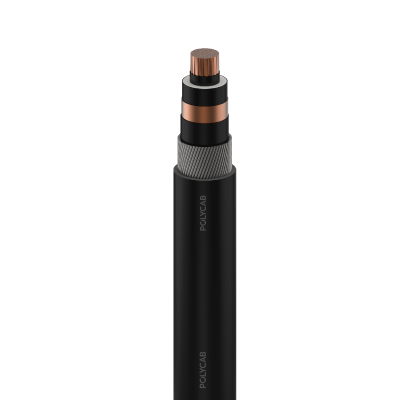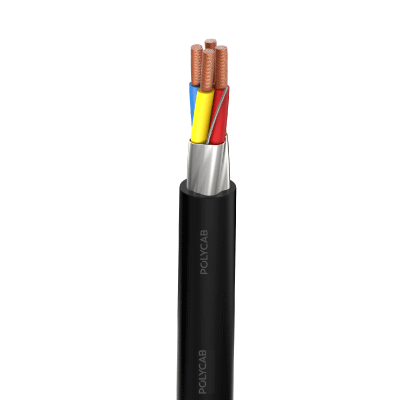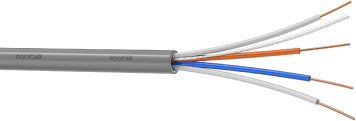CONNECT TO A BETTER LIFE
Polycab is dedicated to make life better with an extensive range of electrical wire and cables that are manufactured in plants using latest technology (electron beam/buss co-kneaders) with world-class materials under strict quality assurance procedures with total traceability of in-house or approved supplier materials and throughout production processes. The Polycab R & D center is the backbone for compound and metals innovative developments to provide optimum power, weight savings coupled with superior fire performance that assures compliance with all local and international standards validated by comprehensive testing at polycab internal NABL accredited lab and external third-party labs.

MV POWER CABLES
3.3Kv to 33Kv Grade- (BASEC/KEMA/CPRl/ERDA tested) three core Copper / Aluminium Conductor,Conductor screened with extruded semi-conducting compound, XLPE Insulated, insulation screened with semiconducting compound in combination with copper tape (0.3 KA for One Sec.), PVC ST2/FR/FRLSH/LSZH Inner Sheathed armoured/ GI Steel (Aluminium in case of single core) FLAT/Round Armoured and Overall PVC ST2/ FR/ FRLSH/ LSZH sheathed cable conforming to IS:7098/ll/85, IEC 60502-2/ BS 7835 From sizes 35 sq.mm to 1200 Sq.mm, above cables can be supplied with lead sheath whenever required.

MV SINGLE CORE POWER CABLES

LV POWER CABLES

LV CONTROL CABLES
INDUSTRIAL FLEXIBLE WIRES & CABLES
PVC
Single core multi-stranded copper conductor, PVC insulated wires with normal flame retardant properties.
PVC
Single core multi-stranded copper conductor, PVC insulated wires with normal flame retardant properties.
PVC
Single core multi-stranded copper conductor, PVC insulated wires with normal flame retardant properties.
HRFR-HEAT RETARDANT FLAME RETARDANT
Single core multi-stranded copper conductor, PVC insulated wires with normal flame retardant properties.
HR-HEAT RETARDANT
HR-FRLSH

SUBMERSIBLE FLAT AND ROUND CABLES

MULTI-CORE INDUSTRIAL FLEXIBLE CABLES
SINGLE CORE DC SOLAR CABLES (SINGLE CORE 2.5 SQ.MM TO 300 SQ.MM)
CO AXIAL CABLES

TELEPHONE CABLES

